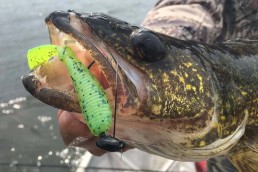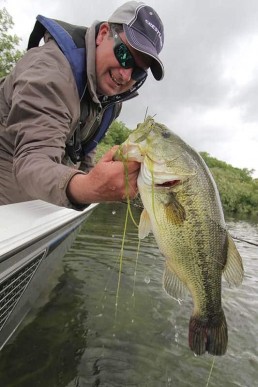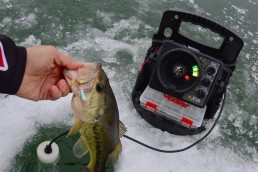Jason Mitchell’s Fall Fishing Hit List
SHARE THIS POST
For die-hard anglers, fall may be the most coveted time of the year. While everyone is participating in season openers and early-season weekends, many anglers put the rods away and park the boat so the mystique of September fishing only increases with the fewer people. Even on good bites on well-known fisheries, boat ramp parking lots sit relatively empty. For hardcore anglers, this is their favorite time of the year.
I have often felt that fishing now is the exact opposite of spring, but there are many similarities. Some of the same locations often produce and many shallow patterns come alive again as water temperatures drop. And like in spring, late afternoons can often produce better as water temperatures bump up, and some mornings can require gloves as the boat can get covered in frost. But here is where spring and fall differ: Spring bites often get better when water temperatures progressively warm up, and then slow down if temps fall off after a cold front. Fall bites seem to get better as water temps decline, and get worse if a warm spell progressively bumps water temperatures back up. Colder fall weather patterns seem to make the fishing better, while unseasonably warm weather often sends a fish’s pattern into disarray.
What is neat about fishing now is that everything seems to be biting. And autumn is one of the best times to target trophy walleyes, muskies, bass and panfish. If there is one sure-fire pattern for bass and panfish in the Upper Midwest, it is to focus on deep breaklines with green weeds. Deep coontail that grows 2 to 4 feet off the bottom along a sharp, breaking drop-off is a magnet for fish. Weeds don’t always have to be green to hold fish. Many of the pondweed and cabbage species do die off and brown up after they seed out by late summer, but brown weeds will still sometimes hold fish if there is good water circulation. The key for brown-and-down weeds holding fish is a close access to deep water, and again, circulation. These weed patterns can also be hot for walleyes and muskies. What makes fall weed patterns different from spring is that the spring weed patterns and growth correlate more with the warmer water in those months. Spring finds fish over large, shallow flats and protected bays, which do warm up faster. The fall weed patterns often occur over sharp breaks and exposed areas that have the aforementioned ideal water circulation.
Shallow boulders and riprap are also locations for big walleyes and muskies. Big rocks seem to attract fish year ‘round, but are very important to species in the fall. On some fisheries, fall-spawning baitfish like tullibees concentrate along rock and riprap, creating a prime feeding opportunity for the larger baitfish. Anglers sometimes overlook this fall-spawning baitfish connection. Baitfish that spawn and concentrate this season include ciscoes, whitefish and tullibees. Many of these baitfish- spawning patterns need rock, but are also heavily influenced by wind. I’ve found almost all of the baitfish and relating predators concentrated on one specific spot that seemed directly influenced by wind. Some of the baitfish seemed to stack on the downwind side of the reef in the calmer waters though, whereas the upwind side was completely dead of life. When the wind died down, that specific spot dried up and the activity shifted. Shallow-rock “patterns” here also seemed to pick up as dark approached and the baitfish moved up to spawn.
Are you enjoying this post?
You can be among the first to get the latest info on where to go, what to use and how to use it!
Deep reefs that combine sharp breaklines and a hard bottom are also classic walleye locations on natural lakes. And for current and bottleneck areas, river systems will come back to life with fish movements. Some of the holes and troughs here are where some of these fish congregate, and will hold them through the winter.
Regardless of water or species, I have often felt that some of the best, most consistent bets this season are the community spots. These are typically very good locations that get ruined by the sheer number of boats. But when many people quit fishing in fall, these are some of the best—no secrets, and no need to outthink other anglers. You simply have to commit yourself, and long after the crowds are gone for hunting or other activities, you can find some of the best fishing for a variety of species and in many different types of water.
Jason Mitchell is a top walleye guide on Devils Lake, N.D. He is the host for the outdoor program, “Jason Mitchell Outdoors.” Visit jasonmitchelloutdoors.com for more.
MWO
SHARE THIS POST
Did you enjoy this post?
You can be among the first to get the latest info on where to go, what to use and how to use it!
Jason Mitchell
Jason Mitchell was a top walleye guide on Devils Lake, N.D. for nearly 20 years. Today, Mitchell produces the Jason Mitchell Outdoors TV program. Visit jasonmitchelloutdoors.com for more.




